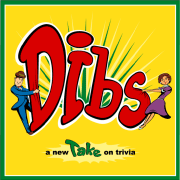
Trivia question; what is the number one complaint most players have about popular trivia games?
Bill Tolany ’92 made it his business to find out after his wife, Gin, commented that he “had a reputation for changing the rules of board games that we always played at Christmas.” So Tolany, a fan of trivia games, decided the only solution was to design his own.
Tolany, who works for an educational software company in Austin, Texas, previously worked for two start-up software companies. One important lesson he learned from the dot.coms, he says, is “get a lot of early feedback.” Before designing his new trivia game, he quizzed friends, including fellow ND graduates, to find out what they disliked about trivia games. The number one complaint, his survey said: taking-turns. One player or team simply waits and watches while an opposing team tries to answer their questions. If another team is on a roll, that can make it extraordinarily boring to watch. Second biggest complaint: the games take too long. And last, but certainly not least, trivia games simply are not fun for a lot of people.
Working with those and his own complaints about trivia games, Tolany designed a game he named Dibs. The first order of play: “I wanted to have everybody involved all the time,” he says. In his game, every question has at least five correct answers. Using cards dealt to them at the beginning of the game, players get Dibs on whether they want to answer the question first, last or somewhere in between. Instead of simply watching others answer questions, Dibs means everyone gets a shot at an answer He also planned the game so it would last one hour.
Once he had set the rules and devised several questions, Tolany used his computer printer and two high-tech accessories, cardboard and scissors, to made a test game. He spent hours at the library and on the Internet, framing questions and checking their answers. Then he invited friends to try it out. “People liked the humorous questions; they laughed a lot, they talked about things,” Tolany says. So he replaced some of the more serious questions with more amusing ones, hoping to keep trivia fans happy and at least entertain non-trivia players. A sample offbeat question: Name one of the eight states with the most UFO sightings per capita." The game also has “rules to stop the know-it-all in your group from taking over the game.”
Finally, after he contracted with a design firm to illustrate the box, board and cards, Tolany had a prototype.
The creative part was fun. The legal nitty gritty of administrative tasks wasn’t. He had to do a trademark search before naming the game, get a patent, a UPC code and an ISBN number, and set up a limited liability company. “It’s been kind of a hassle,” Tolany says.
The excitement began again when he entered the marketplace.“I sold it to a bunch of local stores here,” says the Austin resident. He was not able to sell it to Hasbro, the company that dominates the game industry. However, he points out, “Most successful board games are created by individual inventors . . . so there is room for independent companies to make very successful games.”
Tolany says he wants to prove that there’s a market for a smart, fun trivia game. In February, 2003, he intends to visit the Toy Fair in New York, where he hopes to meet up with buyers. “I want to get it nationally distributed next year,” he says. The game currently is available through www.playdibs.com.
“It’s a lot of fun to see it in a store,” Tolany says. Perhaps someday, when 4-year-old Arianna outgrows Candyland and 2-year-old Connor learns how to play board games, they’ll figure out exactly what Daddy was doing with those scissors and pieces of cardboard.
Carol Schaal is managing editor of Notre Dame Magazie.